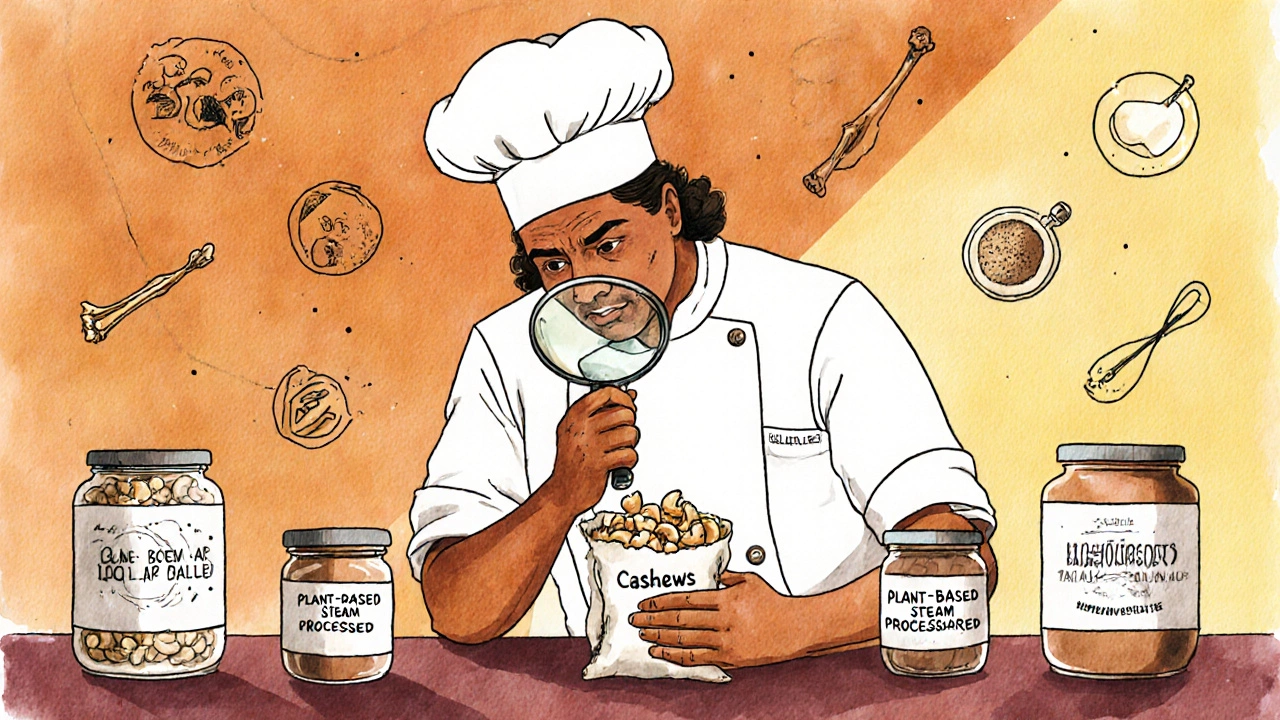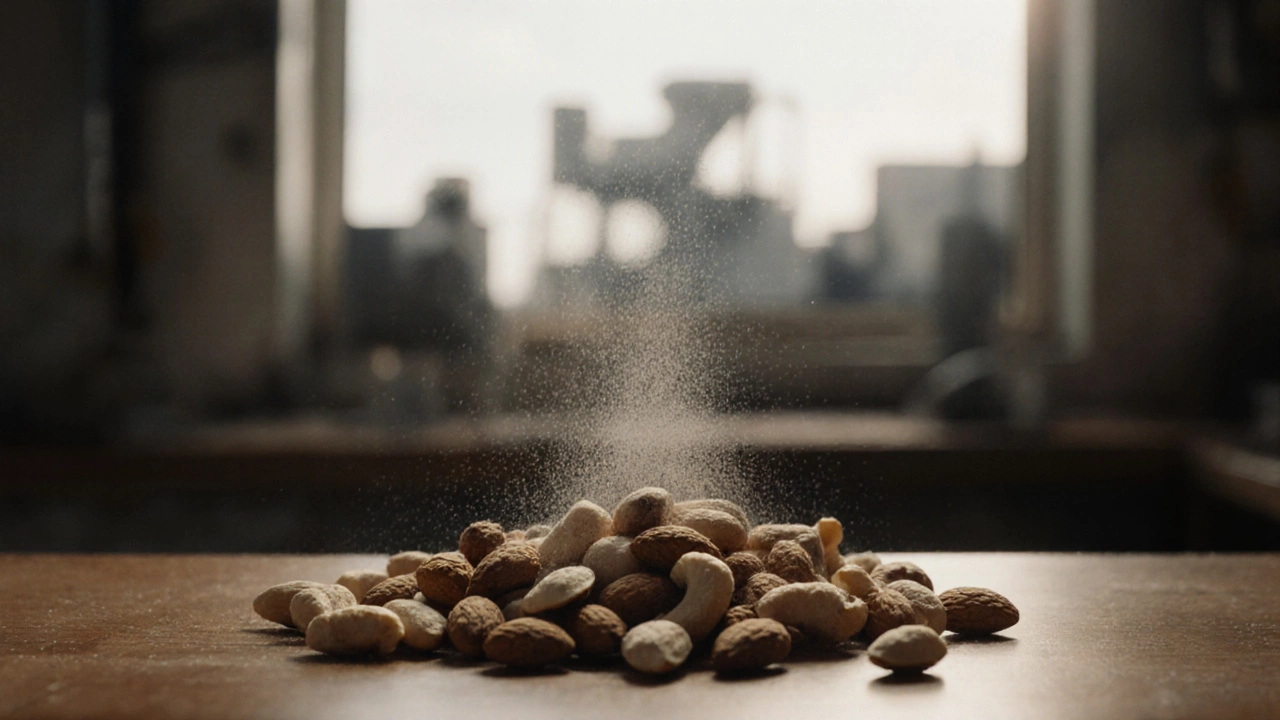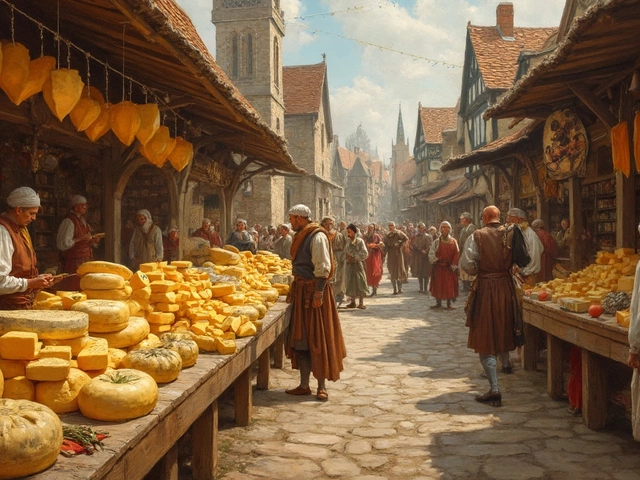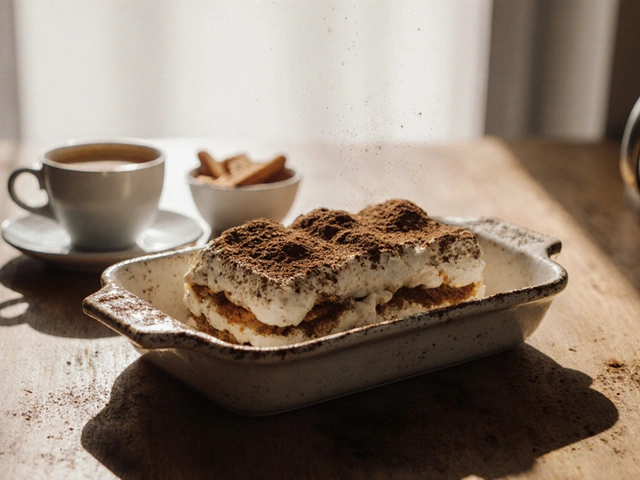Vegan Nut Validator
Is Your Nut Truly Vegan?
Check if your nuts meet vegan standards based on processing methods and country of origin
Ever reached for a bag of almonds to make vegan chocolate truffles, only to wonder-aren’t nuts vegan? It seems obvious. They grow on trees. No animals involved. But here’s the twist: not all nuts are automatically vegan. And if you’re making desserts for a strict vegan, this detail could ruin your whole batch.
It’s Not the Nut-It’s the Processing
Nuts themselves-almonds, cashews, walnuts, pecans-are plant-based. No animal flesh, no dairy, no eggs. So why the confusion? The issue isn’t the nut. It’s what happens after harvest.
Many commercial nut producers use bone char in processing. That’s right-ground-up animal bones. It’s a filtration agent used to whiten sugar, but it’s also sometimes used in the washing and polishing of nuts, especially almonds and cashews, to remove their outer skins and give them a cleaner, brighter look. This step is common in large-scale operations in the U.S. and some parts of Europe. The bone char doesn’t stay in the nut, but it touches it. And for strict vegans, that’s enough.
Think of it like this: if you’re making vegan brownies and use white sugar that was filtered with bone char, you wouldn’t call it vegan. Same logic applies here. The nut isn’t the problem. The processing is.
What About Cashews? The Hidden Animal Link
Cashews are even trickier. The cashew nut grows inside a toxic shell. To remove it, workers must roast or steam the shells open. In many countries, especially in India and Vietnam-the top cashew producers-this work is done by hand, often under unsafe conditions. But the real vegan concern? Some processing facilities use animal-based lubricants or waxes to help the shells slide off machines.
There’s also the issue of cross-contamination. Cashews are often processed on the same lines as dairy powders or egg-based ingredients. Even if the cashew itself is plant-based, it might be sitting in a bin that once held whey protein or powdered milk. You won’t find this on the label. You have to ask the supplier.
How to Tell If Your Nuts Are Actually Vegan
Not all nuts are processed the same way. Here’s how to find truly vegan ones:
- Look for certified vegan labels. Brands like Blue Diamond and Nature’s Path clearly label their nuts as vegan.
- Choose raw or dry-roasted nuts without added oils or flavorings. The simpler the ingredient list, the better.
- Buy from companies that use plant-based filtration. Brands like Trader Joe’s and Whole Foods 365 use only vegetable-based methods.
- Check the country of origin. Nuts from Australia, Canada, and parts of Latin America are less likely to use bone char.
- Call the manufacturer. If you’re unsure, email or call them. Ask: “Do you use bone char in your nut processing?” Most will reply within 48 hours.
Pro tip: If you’re making vegan desserts like almond milk ice cream or cashew cheesecake, buy your nuts in bulk from a co-op or health food store that specializes in vegan ingredients. You’ll get better quality and full transparency.

Why This Matters for Vegan Desserts
Imagine baking a beautiful vegan chocolate tart with a cashew crust. You’re proud of it. You serve it to a friend who’s been vegan for ten years. They take a bite-and freeze. “I don’t eat anything processed with bone char,” they say. Now you’ve embarrassed yourself. And worse-you’ve broken trust.
Vegan desserts aren’t just about swapping butter for coconut oil. They’re about intention. Every ingredient, even the ones that seem harmless, needs scrutiny. A dessert labeled “vegan” on Instagram might not be vegan at all if the nuts were processed with animal byproducts.
This isn’t about being extreme. It’s about consistency. If you’re choosing vegan desserts to avoid animal exploitation, you can’t ignore the hidden links in the supply chain. The same way you wouldn’t use honey in your vegan cupcakes, you shouldn’t use nuts that touched bone char.
What Are the Best Vegan Nuts for Desserts?
Here are the nuts you can confidently use in vegan desserts-verified as bone-char-free and processed without animal products:
- Raw almonds from California co-ops that use steam instead of chemical peeling
- Organic cashews from fair-trade suppliers in Vietnam that use mechanical shelling
- Walnuts from Oregon or Washington, typically air-dried and not polished
- Pecans from U.S. growers who avoid any filtration systems
- Pine nuts from Turkey or Spain, harvested by hand and rarely processed industrially
For desserts, go for raw or lightly toasted nuts. Avoid roasted in oil or honey-glazed versions. Stick to plain. If it says “natural flavor,” dig deeper-some “natural” flavors are derived from animal sources.

Alternatives to Nuts in Vegan Desserts
If you want to avoid the whole nut dilemma, here are plant-based alternatives that work just as well:
- Seeds: Sunflower seeds and pumpkin seeds can replace nuts in crusts and spreads. Toast them for extra flavor.
- Oats: Blended oats make a great base for no-bake bars and cookie dough.
- Coconut: Shredded coconut adds texture and fat. Use coconut cream for rich fillings.
- Legumes: White beans (like cannellini) blend into silky cheesecakes and mousse. Yes, really.
- Plant-based butters: Tahini (sesame paste) and sunflower seed butter offer nut-free creaminess.
Many vegan bakeries in Halifax and beyond now use sunflower seed flour in place of almond flour. It’s cheaper, allergen-friendly, and 100% free from animal processing.
Why This Misconception Persists
Most people think vegan = plant-based. And technically, that’s true. But veganism isn’t just about what you eat-it’s about what went into making it. The vegan movement started as a rejection of animal exploitation in all forms, including indirect ones. That’s why vegans avoid leather, wool, and even some cosmetics.
When companies market “vegan chocolate” or “vegan nut butter” without disclosing processing methods, they’re not lying-they’re omitting. And that’s enough to mislead well-meaning people.
The food industry knows this. They rely on the assumption that “plant-based” equals “vegan.” But if you’re serious about vegan desserts, you need to go beyond the label.
Final Rule: When in Doubt, Skip It
You don’t have to be perfect. But you do have to be intentional. If you can’t verify how your nuts were processed, don’t use them in vegan desserts. Buy certified vegan nuts. Make your own nut butter from raw, unprocessed nuts. Or switch to seeds.
There’s no shame in asking questions. The best vegan desserts come from people who care enough to dig deeper than the ingredient list.
Are all almonds vegan?
Not necessarily. Many almonds in the U.S. are processed with bone char to remove their skins. Look for certified vegan almonds or buy raw, unblanched ones from trusted suppliers.
Can I use cashews in vegan desserts?
Yes-but only if they’re certified vegan or sourced from suppliers who use mechanical shelling and plant-based processing. Avoid cheap, bulk cashews from unknown brands.
Is bone char used in all sugar and nuts?
No. Many sugar brands use activated carbon or ion exchange instead of bone char. Same with nuts-some companies use steam, water, or plant-based enzymes. Always check the source.
What’s the difference between vegetarian and vegan when it comes to nuts?
Vegetarians don’t care about bone char or processing methods-they just avoid meat. Vegans do. If a nut touched bone char, it’s not vegan, even if it’s plant-based.
Are organic nuts always vegan?
No. Organic means no synthetic pesticides or fertilizers. It doesn’t mean no animal byproducts in processing. Organic nuts can still be filtered with bone char.





